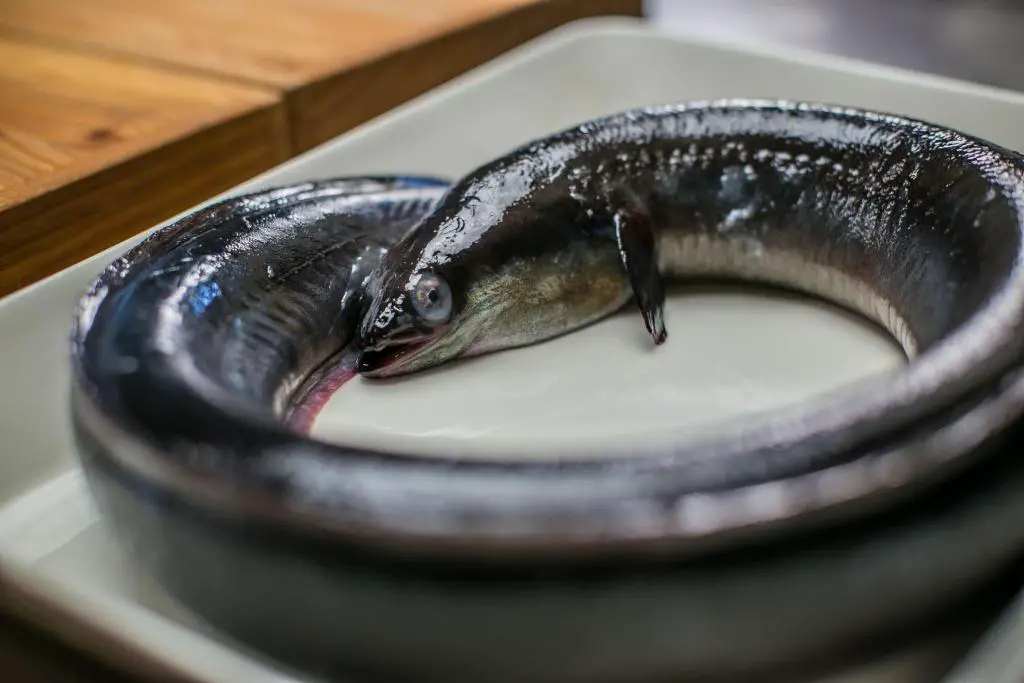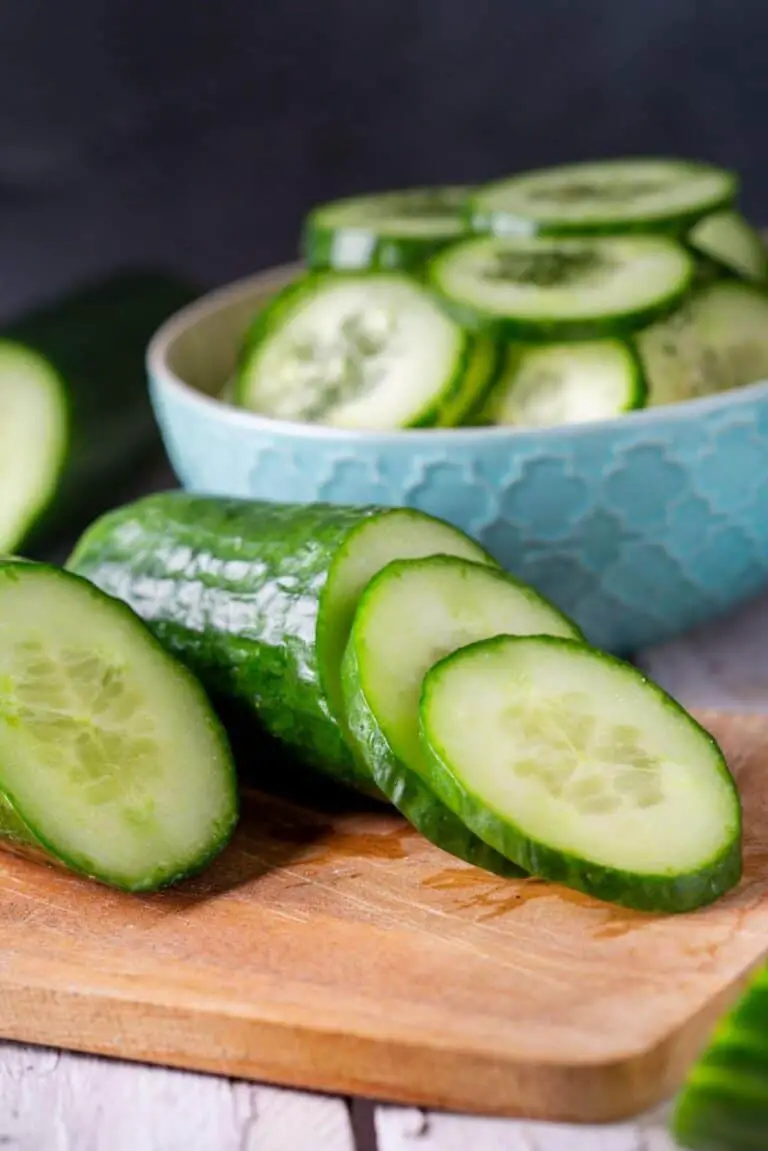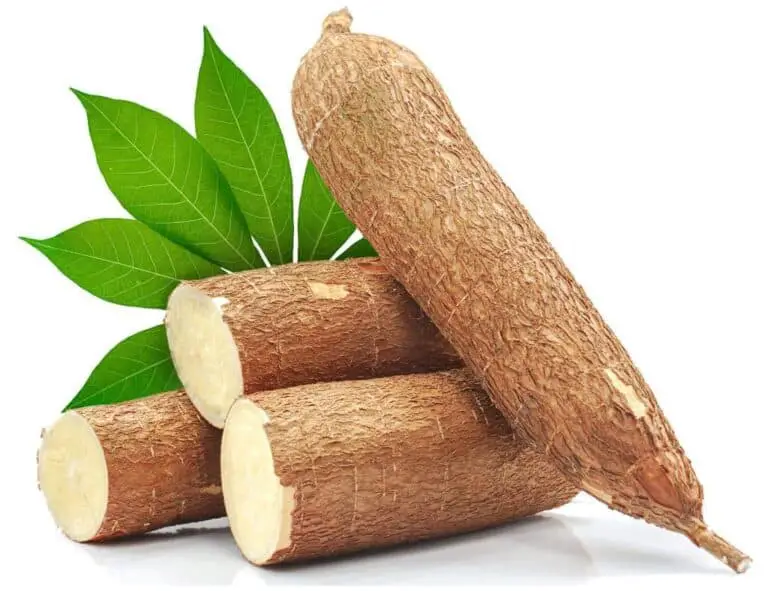Can You Eat Eel Skin? Is Eel Skin Edible and Safe to Eat?

Eel, with its delicate flavor and tender flesh, has long been a delicacy in various cuisines around the world. But what about eel skin? Is this seemingly tough and scaly exterior something that’s worth considering as part of your culinary adventure?
So, can you eat eel skin? Yes, you can eat eel skin, but it can be heavy in texture, leathery, and elastic to the point where you can’t bite through it.
Eel skin, with its fascinating history as a potential food source across various cultures, beckons us to explore its culinary possibilities. From Japanese grills to European traditions and contemporary fusion experiments, the world’s culinary map unveils this unconventional delight.
As we delve into the enigmatic realm of eel skin consumption, we’ll not only uncover its nutritional composition but also discover its cultural significance, while addressing important safety considerations.
So, if you’re a culinary voyager, eager to tantalize your taste buds and expand your palate, join us on this delectable journey to demystify the hidden allure of eel skin cuisine.
The Popularity of Eel as a Food Source
Eel has gained remarkable popularity as a food source in recent years, captivating the taste buds of people worldwide. Its succulent, flaky texture and distinct flavor profile make it a sought-after delicacy. Eel dishes are savored in diverse culinary traditions, from Japanese unagi to Spanish angulas. Moreover, eel’s reputation as a sustainable and nutritious option has further contributed to its rising demand.
In Japan, grilled eel, known as unagi, is a cherished dish often served atop a bed of rice, drizzled with a sweet and savory tare sauce. Meanwhile, in Europe, smoked eel is a delectable treat, especially in countries like the Netherlands and Germany. Its smoky richness pairs wonderfully with crusty bread or in salads.
Eel also stands out as a source of essential nutrients like omega-3 fatty acids, protein, and vitamins. Furthermore, its relatively low environmental impact compared to other seafood options aligns with the growing sustainability consciousness of consumers.
Can You Eat Eel Skin?

Throughout history, different cultures have embraced eel skin as a potential food resource. From Asian cuisines to indigenous preparations, eel skin has found its way into diverse culinary traditions.
Eel skin might not be the first thing that comes to mind when you think about eel cuisine, but surprisingly, the skin is indeed edible. While the skin of many fish and seafood is often discarded, eel skin takes on a different role in certain culinary traditions.
However, it’s important to note that not all types of eel skins are consumed, and preparation methods can vary.
Nutritional Composition of Eel Skin
Eel skin boasts a surprising array of nutrients. It’s a source of protein, providing the building blocks for body repair and growth. Additionally, it contains fats that contribute to energy reserves and support various bodily functions. Vitamins and minerals, essential for our well-being, also make their appearance in eel skin.
Eel skin not only offers a culinary adventure but also provides nutritional benefits. It’s a source of collagen, which is beneficial for skin health and elasticity. Additionally, eel skin contains healthy fats, such as omega-3 fatty acids, which are known for their heart-protective properties.
| Nutrient | Amount per 100g of Eel Skin |
| Calories | 72 |
| Protein | 12g |
| Total Fat | 2g |
| Omega-3 Fatty Acids | 350mg |
Is Eel Skin Safe to Eat?
Safety is a paramount concern when it comes to consuming any type of food, and eel skin is no exception. The safety of eel skin largely depends on how the eel has been sourced and prepared. In regions where eel consumption is prevalent, such as Japan and some parts of Europe, eels are typically farmed and processed under controlled conditions, ensuring that they are safe for consumption.
When cooked properly, eel skin can be a delicious and safe part of your meal. The cooking process helps to eliminate any potential bacteria or parasites that might be present on the skin. Grilling, frying, or smoking the eel skin are common cooking methods that not only enhance its flavor but also contribute to its safety for consumption.
WARNING
Yes, eel skin is edible, but its texture can be so dense and elastic that it is difficult to chew. However, it is important to note that only certain parts of the eel are safe to eat, and raw eel blood contains toxic proteins that can cause death if consumed. Therefore, it is crucial to properly clean and cook the eel before consumption to eliminate any risk of intoxication. You don’t want to eat raw eel, for obvious reasons.
Safety Concerns and Potential Risks
While the prospect of consuming eel skin is intriguing, safety remains a paramount concern. We delve into the potential risks associated with eel skin consumption, including the presence of contaminants, toxins, and allergens.
For individuals with specific dietary restrictions or health conditions, understanding the safety implications is crucial. By addressing these concerns, we aim to provide a comprehensive view of whether eel skin is a safe option for consumption.
By dissecting the intricacies of eel skin, we embark on a journey that combines history, nutrition, culture, and safety. Whether you’re a culinary adventurer or someone seeking a nuanced understanding, this exploration into the world of eel skin consumption offers a tapestry of insights that might just change the way you perceive this enigmatic delicacy.
Cultural and Culinary Significance of Eel Skin
In the culinary world, eel skin holds more than just nutritional value; it offers a unique sensory experience. Across different cultures, it’s prepared and cooked in ways that embrace its distinct texture and flavor. From crispy eel skin chips to savory stews, the versatility of eel skin never fails to amaze. As we explore these preparation methods, we’ll uncover the subtle nuances that contribute to their appeal in the culinary realm.
Culinary Uses of Eel Skin
In various cuisines, eel skin is treated as a delicacy and utilized in creative ways. Here are a few examples of how eel skin is prepared and enjoyed:
1. Japanese Cuisine
Japanese cuisine, renowned for its attention to detail and delicate flavors, has a deep appreciation for eel. In Japan, eel skin is often grilled to a crispy texture and seasoned with a mixture of soy sauce, sake, and mirin. This preparation method enhances the natural flavors of the eel skin while providing a satisfying crunch.
2. European Cuisine
In some European countries, particularly in regions with a strong fishing heritage, eel skin is used to make a traditional dish known as “jellied eels.” The skin is stewed slowly until it becomes soft and gelatinous. The dish is often flavored with herbs and spices, creating a unique combination of textures and tastes.
3. Fusion Cuisine
As culinary boundaries continue to blur, chefs around the world are experimenting with eel skin in fusion dishes. Eel skin can be transformed into crunchy chips, added to salads for an extra layer of texture, or even incorporated into sushi rolls for an unexpected twist.
Conclusion
In conclusion, eel skin is indeed edible and safe to eat when properly prepared. Its consumption is a testament to the creativity and resourcefulness of various culinary traditions around the world. From the crispy eel skin of Japanese cuisine to the jellied eels of Europe, and the innovative fusion dishes of modern gastronomy, eel skin has found its way onto plates in captivating ways.
So, if you’re an adventurous foodie looking to expand your palate, don’t hesitate to explore the world of eel skin cuisine. Just remember to savor the flavors, appreciate the textures, and relish in the shared global appreciation for turning the seemingly unconventional into the utterly delectable.
FAQs on Eel Skin Consumption Safety
Can I eat the skin of all eel species?
While the skin of some eel species is consumed in certain cultures, not all eel skins are considered edible or safe for consumption. It’s important to research the specific type of eel before consuming its skin.
What is the texture of eel skin like when eaten?
Eel skin, when prepared properly, can have a slightly chewy texture. Cooking methods and preparation techniques can influence the final texture.
Are there any potential allergic reactions to eel skin?
Individuals with seafood allergies might be at risk of experiencing allergic reactions to eel skin. As with any unfamiliar food, caution should be exercised, especially for those with allergies.
Is eel skin consumption environmentally responsible?
The environmental impact of consuming eel skin depends on factors like eel populations, fishing practices, and sustainability efforts. Considering these aspects is important for making environmentally conscious choices.
How do you cook eel skin?
Eel skin can be grilled for a crispy texture, fried for added crunch, or even stewed for traditional jellied eel dishes, depending on the culinary tradition you’re exploring.
Are there any traditional dishes using eel skin?
Yes, indeed. In Japanese cuisine, eel skin is grilled and seasoned for a crispy delight. European cuisine offers jellied eel, where the skin is stewed to a soft, gelatinous texture, reflecting regional flavors and heritage.






